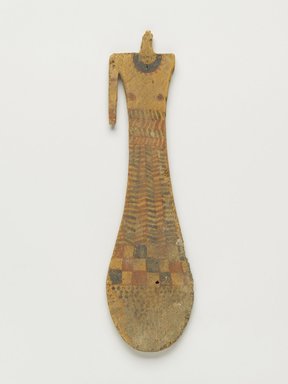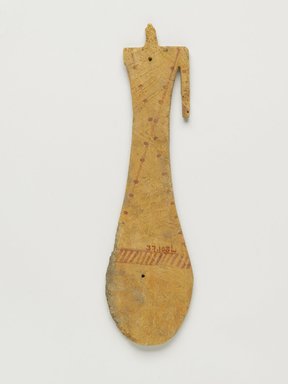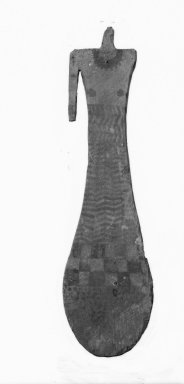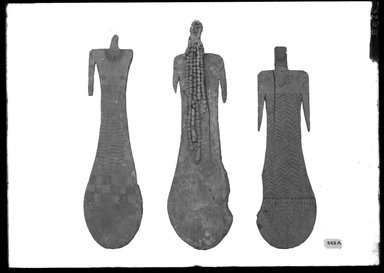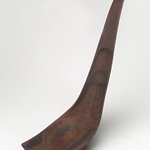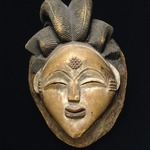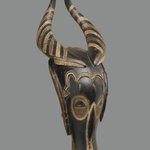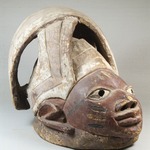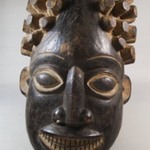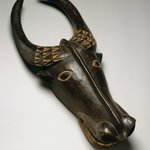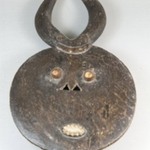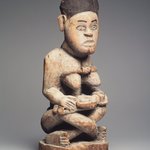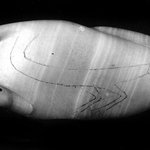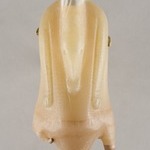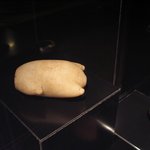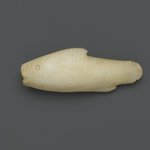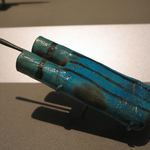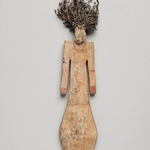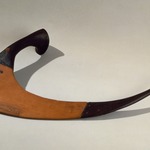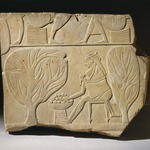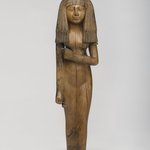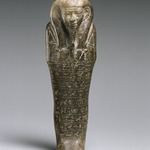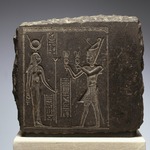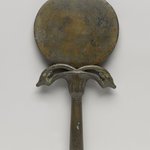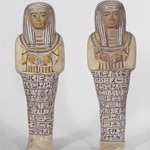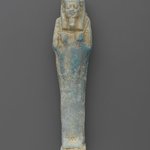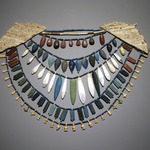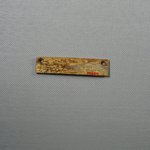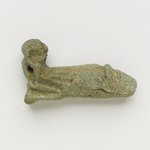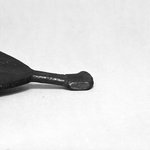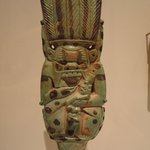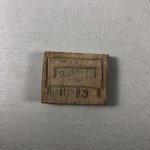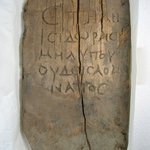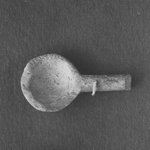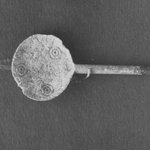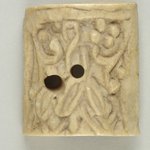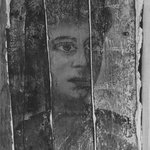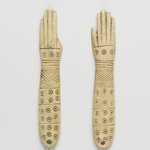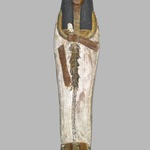Paddle Doll
Egyptian, Classical, Ancient Near Eastern Art
The term paddle doll dates to archaeologists’ first discovery of such objects in the early twentieth century. Today, Egyptologists understand these objects not as dolls, but as representations of musicians who doubled as midwives. The necklaces they wear represent a musical instrument called a menat in Egyptian.
The Egyptians considered music to be a therapeutic or even magical element aiding childbirth. When these images were included in the tomb, they could help ease the pain of rebirth into the next life.
MEDIUM
Wood, pigment
DATES
ca. 2008–1630 B.C.E.
PERIOD
Middle Kingdom
DIMENSIONS
8 7/8 x 2 7/16 x 1/4 in. (22.6 x 6.2 x 0.6 cm)
(show scale)
ACCESSION NUMBER
37.103E
CREDIT LINE
Charles Edwin Wilbour Fund
CATALOGUE DESCRIPTION
Flat wooden female figurine with details of anatomy, garment and jewelry painted in red and black on both sides. Probably a servant figurine, also referred to as a paddle doll.
Condition: Left arm is missing, and part of the head and right arm have been broken off. There are two holes through the figure, one below the head and the other near the bottom. The edges are generally worn, especially the lower left. There are diagonal lines scored across the front and the back, and patches of grayish dirt.
MUSEUM LOCATION
This item is not on view
CAPTION
Paddle Doll, ca. 2008–1630 B.C.E. Wood, pigment, 8 7/8 x 2 7/16 x 1/4 in. (22.6 x 6.2 x 0.6 cm). Brooklyn Museum, Charles Edwin Wilbour Fund, 37.103E. Creative Commons-BY (Photo: Brooklyn Museum, 37.103E_front_PS4.jpg)
IMAGE
front, 37.103E_front_PS4.jpg. Brooklyn Museum photograph, 2016
"CUR" at the beginning of an image file name means that the image was created by a curatorial staff member. These study images may be digital point-and-shoot photographs, when we don\'t yet have high-quality studio photography, or they may be scans of older negatives, slides, or photographic prints, providing historical documentation of the object.
RIGHTS STATEMENT
Creative Commons-BY
You may download and use Brooklyn Museum images of this three-dimensional work in accordance with a
Creative Commons license. Fair use, as understood under the United States Copyright Act, may also apply.
Please include caption information from this page and credit the Brooklyn Museum. If you need a high resolution file, please fill out our online
application form (charges apply).
For further information about copyright, we recommend resources at the
United States Library of Congress,
Cornell University,
Copyright and Cultural Institutions: Guidelines for U.S. Libraries, Archives, and Museums, and
Copyright Watch.
For more information about the Museum's rights project, including how rights types are assigned, please see our
blog posts on copyright.
If you have any information regarding this work and rights to it, please contact
copyright@brooklynmuseum.org.
RECORD COMPLETENESS
Not every record you will find here is complete. More information is available for some works than for others, and some entries have been updated more recently. Records are frequently reviewed and revised, and
we welcome any additional information you might have.
Why are these called a dolls?
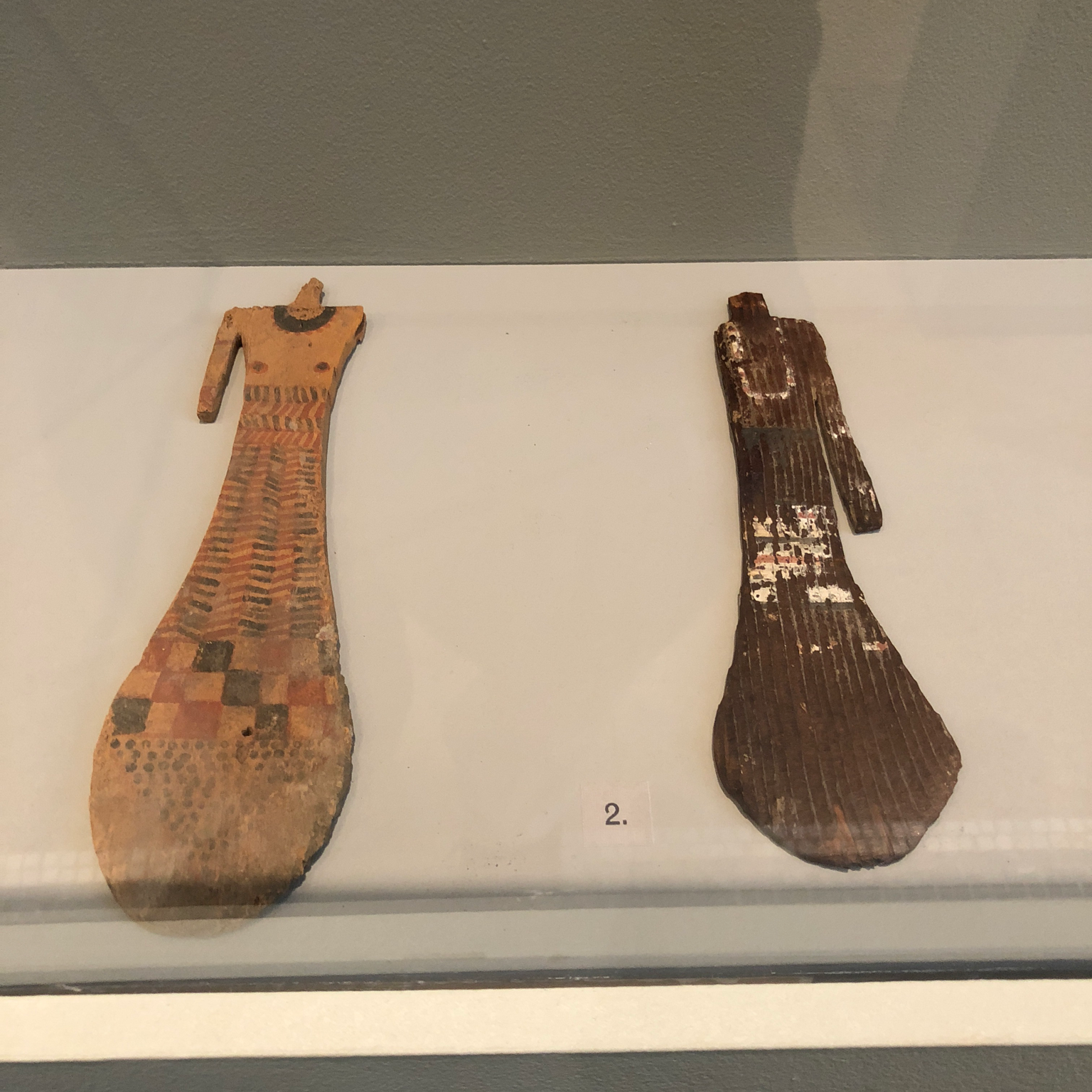
I believe the term doll was assigned to this type of object because of the abbreviated human form similar to a toy. The term has endured even though we not know that they were not toys, but that they were likely associated with music.
